Edukasi fesyen muslim: Upaya meningkatkan kreativitas melalui hijab masker di tengah pandemi
 Abstract views: 294
,
Abstract views: 294
,
 PDF downloads: 357
PDF downloads: 357
Abstract
This Community Service activity aims to educate the public about the opportunities for hijab masks amid a pandemic. As Participatory Action Research, this community service was carried out through online seminars, online discussions, and online assistance through Whatsapp groups. This activity has been conducted in Kudus regency. The participants are the millennial community who is the potential to develop hijab masks for their economic recovery. This service provided a positive response for the community so that they are more aware of efforts to be more creative amid a pandemic. They were equipped with education from well-known hijab activists in providing understanding to create attractive fashion designs and have branding. This service recommendation can provide direct follow-up assistance through the blended method to make it more effective.
(Kegiatan Pengabdian Kepada Masyarakat ini bertujuan untuk memberikan edukasi kepada masyarakat tentang peluang hijab masker di tengah pandemi. Metode PAR ini dilaksanakan melalui seminar online, diskusi online dan pendampingan online melalui Whatsapp grup. Kegiatan ini dilaksanakan di kota Kudus dengan peserta masyarakat milenial yang memiliki potensi mengembangkan hijab masker untuk pemulihan ekonomi mereka. Hasil pengabdian ini memberikan respon posisif bagi masyarkat sehingga lebih sadar akan upaya untuk lebih kreatif di tengah pandemi. Mereka dibekali edukasi dari pegiat hijab ternama untuk memberikan pemahaman untuk membuat desain fesyen yang menarik dan memiliki branding. Rekomendasi pengabdian ini dapat memberikan pendampingan lanjutan secara langsung melalui metode blended agar lebih efektif.)
Downloads
References
Buana, D. R. (2020). Analisis Perilaku Masyarakat Indonesia dalam Menghadapi Pandemi Virus Corona (Covid-19) dan Kiat Menjaga Kesejahteraan Jiwa. SALAM: Jurnal Sosial dan Budaya Syar-I, 7(3). https://doi.org/10.15408/sjsbs.v7i3.15082
Ernawati, A., Astuti, E. Z., Patriantoro, T. H., Marta, R. F., & Lang, J. C. F. (2021). Identitas Gaya Fesyen Islami pada Sivitas Akademika di Perguruan Tinggi Kota Semarang. Jurnal Dakwah Risalah, 31(2), 154. https://doi.org/10.24014/jdr.v31i2.11087
Gunadi, W. (2020). Prospek dan Strategi Bersaing pada Industri Fesyen. Jurnal Ilmiah M-Progress, 10(1), 45–56.
Hassim, N. (2014). Hijab and the Malay-Muslim Woman in Media. Procedia - Social and Behavioral Sciences, 155(October), 428–433. https://doi.org/10.1016/j.sbspro.2014.10.317
Jumini, S., Nisa, T. N., Mawadah, A., Masruroh, A. L., Ihfad, M., & Sulistyo, A. R. (2021). Pendampingan Budidaya Potensi Lokal dalam Mewujudkan Ketahanan Pangan di Era Pandemi Covid-19. Jurnal Penelitian dan Pengabdian Kepada Masyarakat UNSIQ, 8(3), 306–314. https://doi.org/10.32699/ppkm.v8i3.1903
MD, U. W., & Achiria, S. (2020). Peran Trend dan Motif HijrahTerhadap Pembelian Busana Muslimah di Kota Palu. Jurnal Ilmu Ekonomi dan Bisnis Islam, 1(2), 1–17. https://doi.org/10.24239/jiebi.v1i2.9.1-17
Mila, D. (2015). Pengembangan bisnis industri kreatif bidang fesyen dengan pendekatan ekspor untuk memperkuat perekonomian nasional. Journal of Applied Business and Economics, 2(2), 123–133. Retrieved from https://journal.lppmunindra.ac.id/index.php/JABE/article/view/1459
Passileva, R., & Musadieq, M. Al. (2018). Analisis Strategi Bauran Pemasaran Internasional Produk Baju Busana Muslim (Studi pada PT. Vuza Tamma Abadi). Jurnal Administrasi Bisnis (JAB), 57(1), 170–179.
Purwaningwulan, M. M. (2021). The Implementation of Sharia Marketing Communication in The Muslim Fashion E-Commerce in Indonesia. Jurnal Penelitian Komunikasi, 24(1), 1–14. https://doi.org/10.20422/jpk.v24i1.720
Rahmawaty, D., Nadiroh, Husen, A., Purwanto, A., & Astra, I. M. (2021). Sustainable Fesyen Sebagai Upaya Gerakan Zero Waste. Community Development Journal, 2(2), 431–437. Retrieved from https://journal.universitaspahlawan.ac.id/index.php/cdj/article/view/1869
So’imah, N. (2012). Strategi Pemasaran Produk Busana Muslim “Galeri Dita” Pada Era Globalisasi. Fashion and Fashion Education Journal, 1(1), 20–23. Retrieved from http://journal.unnes.ac.id/sju/index.php/ffe
Syathari, rian ahmad, Rahayu, A., & Hurriyati, R. (2019). Kinerja Bisnis Industri Butik Muslim di Jawa Barat. SOSIOHUMANIKA: Jurnal Pendidikan Sains Sosial dan Kemanusiaan, 12(1), 157–168.
Umam, A. N., & Altiria, S. (2010). “Hijab Fashion” Interpretation Among Muslim Fashion Enthusiasts and Common Female Muslims in Indonesia. (2006), 1–15.
Wulandari, C. (2021). Optimizing the Use of Social Media as a Brand Destination-based Promotional Media for Glagah Wangi Istambul Beach in Demak. Jurnal Pengabdian Kepada Masyarakat (Indonesian Journal of Community Engagement), 7(3), 201. https://doi.org/10.22146/jpkm.65197
Wulansari, D. A., & Puspitasari, C. (2019). Festival Tabut Bengkulu sebagai Inspirasi Tenun Tapestri pada Produk Fesyen Muslim. E-Proceeding of Art & Design, 6(2), 1825–1828.
Zaidah, A., & Haq, B. N. (2020). Analisis Boston Consulting Group pada Produk Busana Muslim UMKM Azqila Hijrah. Jurnal IKRA-ITH Ekonomika, 3(3), 1–10.
Copyright (c) 2022 PERDIKAN (Journal of Community Engagement)

This work is licensed under a Creative Commons Attribution-NonCommercial 4.0 International License.
In order for PERDIKAN to publish and disseminate research articles, we need publishing rights. This is determined by a publishing agreement between the author and PERDIKAN. This agreement deals with the transfer or license of the copyright to PERDIKAN and authors retain significant rights to use and share their own published articles. For both subscription and open access articles, published in proprietary titles, PERDIKAN is granted the following rights:
- The right to provide the article in all forms and media so the article can be used on the latest technology even after publication.
- The authority to enforce the rights in the article, on behalf of an author, against third parties, for example in the case of plagiarism or copyright infringement.
Copyright aims to protect the specific way the article has been written to describe an experiment and the results. PERDIKAN is committed to its authors to protect and defend their work and their reputation and takes allegations of infringement, plagiarism, ethic disputes and fraud very seriously.
If an author becomes aware of a possible plagiarism, fraud or infringement we recommend contacting their PERDIKAN publishing contact who can then liaise with our in-house legal department. Note that certain open access user licenses may permit


1.png)


.png)


